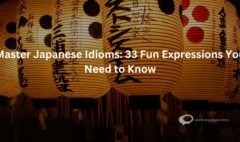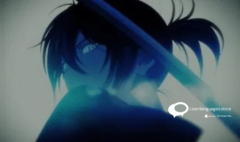An easy beginner’s guide to learning Japanese Hiragana and Katakana
An easy beginner’s guide to learning Japanese Hiragana and Katakana
The “kana,” also known as hiragana and katakana, are commonly advised to be learned when learning Japanese, both by textbooks and instructors. These Japanese writing methods are crucial for helping students become competent in the language.
You can learn to write, type, and read Japanese kana using the recommended methods and resources. When you get into it, you might even crave Japanese subtitles instead of English when watching Japanese dramas. Sounds motivating, right?
Hiragana, katakana, and kanji are the three main scripts (or alphabets) used in Japanese.
Japanese kanji (漢字) are Chinese characters that have been adopted for use in modern Japanese writing. Kanji is used to write the majority of Japanese words (nouns, adjectives, and verbs). Because there are no spaces in Japanese, kanji aids in determining when a new word begins. Kanji characters are word-representing symbols
Hiragana and katakana are both made up of about 50 characters. Don’t let this number scare you. When you think about it, the English alphabet has 104 different letter appearances between capital and lowercase letters, cursive, and print.
All hiragana and katakana characters make phonetic sounds, just like the English alphabet. This means that こ makes the “ko” sound, ん makes the “n” sound, に makes the “ni” sound, ち is “chi”, and “は” in this situation is pronounced as “wa”. Together, こんにちは reads as “konnichiwa”. You can use hiragana to read the sound of a kanji character. Hiragana and katakana share the same sounds but have distinct characters.
Japanese Hiragana

Hiragana (ひらがな) is primarily used for grammatical purposes. The suffix “-ing” would be written in hiragana in Japanese. Hiragana is used to write participants, expressions, and words that contain extremely difficult or rare kanji. Hiragana characters are easy to recognize because they are curvier and appear simpler than Kanji characters.
私の名前は優也です。
寿司を食べます。
英語は難しい…
There are some cases where Japanese words use hiragana more often than kanji, such as かわいい (kawaii) or さようなら (sayounara).
Japanese Katakana
While it represents the same sounds as hiragana, katakana (カタカナ) is primarily used to represent foreign words. Foreign names, as well as many foreign foods, are written in katakana. Japan’s amusing and eccentric onomatopoeia can be found in both katakana and hiragana.

Katakana characters have a boxier shape than hiragana characters and appear simpler than kanji characters. Every katakana character has a hiragana counterpart that makes the same sound as the katakana character.
レディー・ガガ (Lady Gaga)
ジョン・スミス (John Smith)
The small circle in between the above-mentioned names distinguishes a first name from a last name (or two names) so that Japanese readers can tell where a foreign name begins and ends.
ビールを飲んでみましょう!(Let’s drink beer!)
私はアメリカンフットボールが好きです!(I like American football*.)
マクドナルドで食べる。(Eat at McDonald’s.)
How to learn Japanese hiragana and katakana
The first thing you should do is keep a hiragana and katakana chart handy for reference. A simple internet search will yield a plethora of useful charts. Then, make sure your computer can read and write in Japanese.
Type in Japanese
Select Japanese input on your computer to begin typing in Japanese. Type normally on your standard (English) keyboard. So if you write “a” on your keyboard the character “あ” (which makes the same phonetic sound) will appear. If you type “ko” the character “こ” will be created.

If you are happy with what you’ve written, press the “enter” key on your keyboard. To switch from hiragana to katakana, press the “space key” on your keyboard. A drop-down menu with a list of possible katakana or kanji should appear.
You will be able to recognize more and more characters after frequently typing in Japanese. You can regularly practice writing by keeping a small journal, a study notebook, or flashcards.
You can keep a small calendar in Japanese of your daily activities and special events. Recording your daily events in Japanese script can help you more than you can even imagine. Practice makes a man perfect, so try writing down a few words every day, even if it’s just a few sentences.
Read in Japanese
Look for a beginner’s Japanese book to read Japanese. At first, you may dislike it but it will benefit you in the long run. Furigana is used in beginner books so that readers who do not yet know kanji can read with hiragana. The books also include audio, so you can read while listening to a native speaker. Following along with the native speaker or mimicking them is a great way to improve your reading and speaking speed.
Furigana is hiragana written over Kanji characters. This is especially useful for anyone learning hiragana or kanji. A Furigana web browser plug-in will allow you to browse Japanese websites and hover over unfamiliar words. When you hover over an unfamiliar word, it will display both hiragana and an English translation.
Conclusion
Mastering Japanese writing systems is essential for every Japanese learner. Start with Japanese hiragana and eventually move towards Japanese kanji. If you are wondering where to learn Japanese, know that there are plenty of learning resources available online.
Learn Languages Store
Vashi,
Email: services@learnlanguages.store










